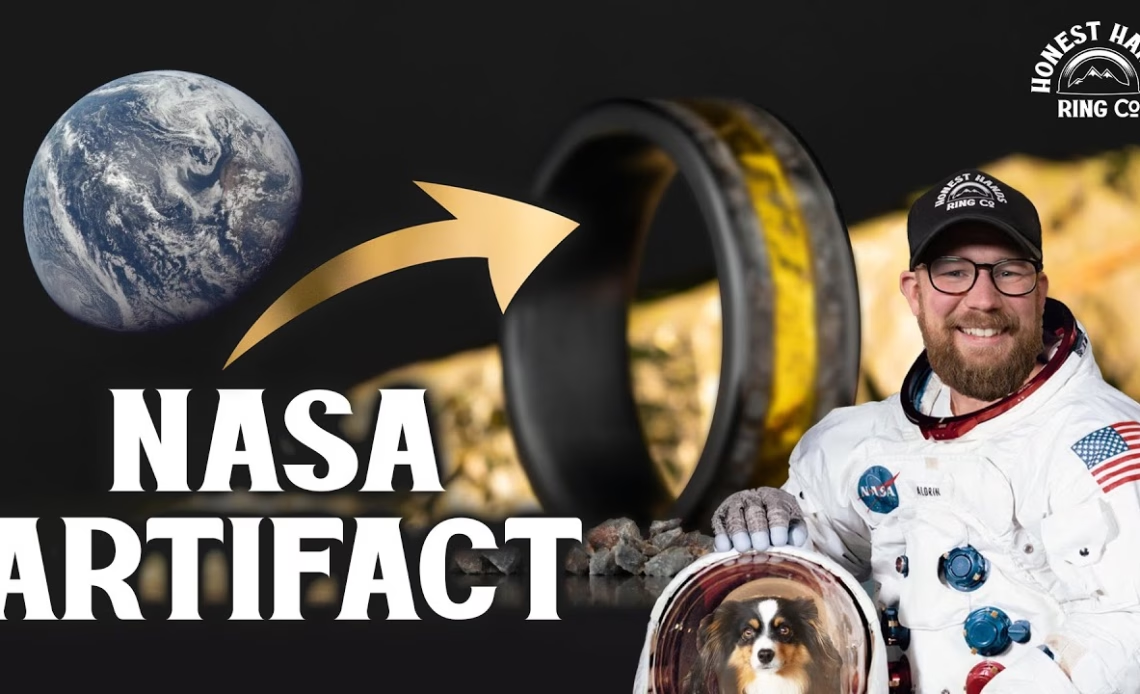For better or for worse, a small part of the Apollo 11 spacecraft will now be Jon Mesick’s to have and to hold for all the days of his life.
The strip of golden thermal polyimide tape, which made the trip to the moon with the first astronauts to land there in 1969, is now the centerpiece of Mesick’s custom wedding band made by the Honest Hands Rings Company of Morrison, Colorado. The ring, which also incorporates lunar meteorite, is the focus of a newly posted online video that highlights the ring’s significance and shows how it was made.
“We’ve made thousands of rings before, but never with anything this rare,” said Ben Bosworth, Honest Hands Ring Co. owner. “That was the most stressful ring that we’ve ever done.”
Mesick’s desire to have a piece of the Apollo 11 mission integrated into his ring stemmed, in part, from his work as a planning manager for Lockheed Martin. The aerospace company is one of the prime contractors for NASA’s Artemis program, providing Orion, the spacecraft currently planned to return the first astronauts to the moon in more than 50 years.
Related: The Apollo Program: How NASA sent astronauts to the moon
The Mylar-like, flown-to-the-moon foil was acquired at an auction. The 9-inch (23 centimeters) piece traced back to the estate of an NASA production control engineer who headed the machine shop responsible for preparing artifacts for museum display and mementos for distribution to space agency officials, employees and others.
“It’s a much larger piece than I needed for the ring, but I’m going to frame [the remainder] in my house. It’s something I will always treasure,” said Mesick in an interview with Denver 7, an ABC News affiliate.
Peeling back history
The Apollo 11 spacecraft was comprised of two vehicles: a command module named “Columbia” and the lunar module “Eagle.” The earlier remained in lunar orbit with astronaut Michael Collins while Eagle landed at Tranquility Base with moonwalkers Neil Armstrong and Buzz Aldrin.
Columbia’s exterior was covered in an aluminized laminate. The tape’s outer layer was silver in color to reflect sunlight, while underneath was gold to expel radiation. Both helped regulate the command module’s temperature on the trip from Earth to the moon and back.
When Columbia returned home, the intense heat generated during the reentry into the atmosphere resulted in some of the tape burning off. After splashing down in the ocean and being hoisted…
Click Here to Read the Full Original Article at Latest from Space…

